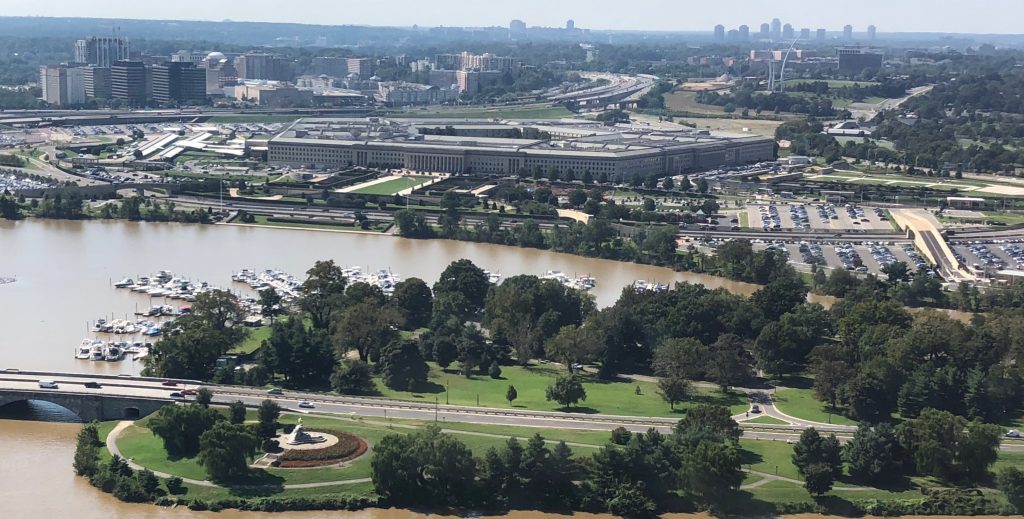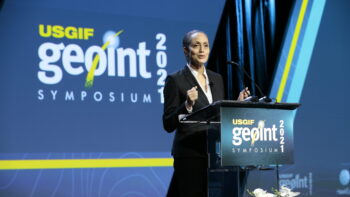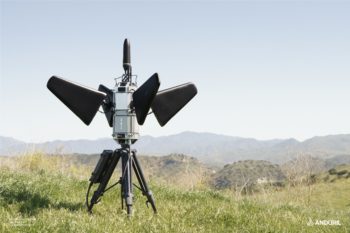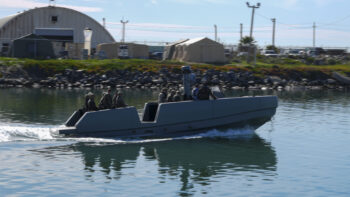
WASHINGTON: The Joint Requirements Oversight Council (JROC), led by Joint Chiefs Vice-Chairman Gen. John Hyten, is asserting new powers to direct how the services fulfill Combatant Commanders’ needs to ensure the future Joint Warfighting Concept (JWC) is not undercut by competing service imperatives and parochial rivalries.
This represents “a little bit of a different take on how the JROC has been run before,” said Brig. Gen. Rob Parker, deputy director of the Joint Staff J6 directorate for Command, Control, Communications, & Computers/Cyber. The idea, he told AFCEA today, is for the JROC to be “more prescriptive, directive to the services.”
[Click here for Brig. Gen. Parker’s remarks on JADC2]
Rather than simply transmit requirements to the services, the JROC now will issue “strategic directives” to the services prescribing how they craft buying plans to substantiate the emerging JWC, Parker explained.
“Traditionally, you would see the services coming to the JROC to lay out their requirements, capabilities, [and] look for their endorsement so that they could move forward, get resourcing and execute,” Parker said. But under the new approach, he said, “using Title 10 authorities, the Vice [i.e. Hyten] wants to be more directive, so these strategic directives are focused at each of the supporting warfighting concepts: fires, information advantage, contested logistics, C2.”
The JWC will outline the new American way of war known as All Domain Operations; that is, next-generation, information-based wars using enormous amounts of AI-driven analysis across the five “domains” of land, air, sea, space and cyberspace. The services were tasked by Chairman of the Joint Chiefs of Staff Gen. Mark Milley with fleshing out the JWC sub-concepts: the Army has contested logistics; the Air Force Joint All Domain Command and Control (JADC2); the Navy joint, long-range fires; and the Joint Staff, information advantage.
Launched in 2019 by then-Defense Secretary Mark Esper, a draft of the new warfighting concept and detailed articulations of its four sub-concepts were originally slated for completion by the end of 2020. After a delay caused by the COVID-19 pandemic, it now is expected to be blessed by Milley and Defense Secretary Lloyd Austin by the end of this month.
For the past year Hyten has advocted JROC reform to make it more proactive, and to speed its decision making. Further, he and other Joint Staff leaders have been telegraphing changes to that end for months as the JWC has been evolving.
In particular, Hyten has honed in on the need for more coherence in how service C2 networks are stitched together for use in battle by joint commanders, and eventually transitioned to a more seamless data web under the overarching JADC2 strategy being developed by the Joint Staff.
Parker noted that JROC already has approved four “required capabilities” for JADC2 developed by the Joint Staff JADC2 Cross Functional Team that he leads, that will then be transmitted to the services by a strategic directive “later this month.”
The Joint Staff is not specifying to the letter how services write software to enable those capabilities, however, Parker explained in an interview back in February. Instead, the goal is to develop open data standards for all future military sensors and weapons to connect at machine speed. Those data standards, in turn, will allow service-specific C2 networks to plug into a “common data fabric” that will create a common operational picture for battlefield commanders.
Sydney contributed to this story.





















